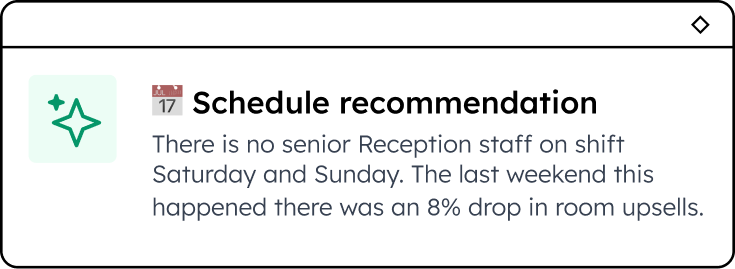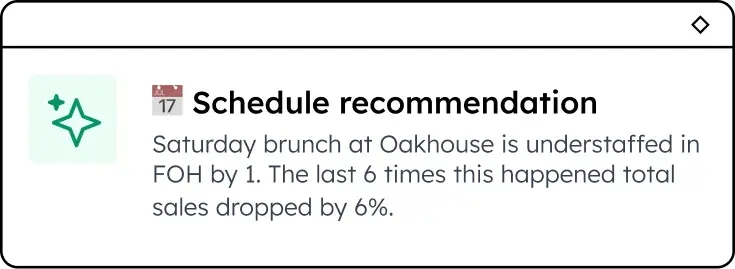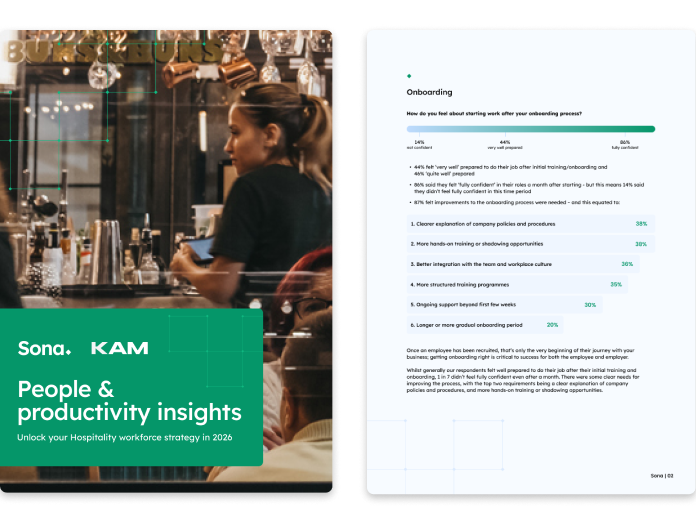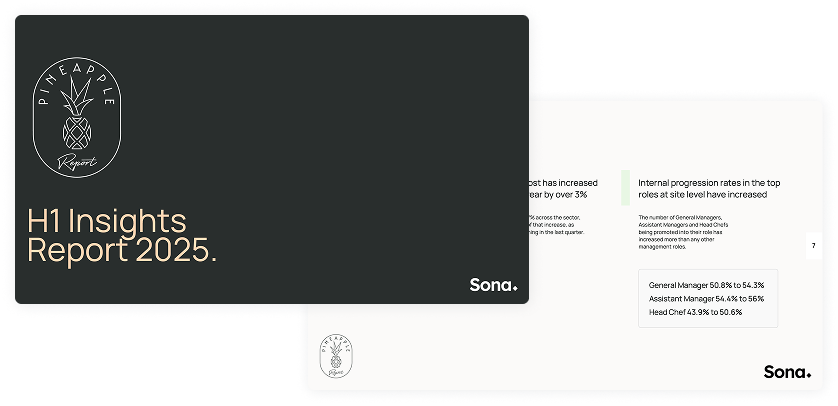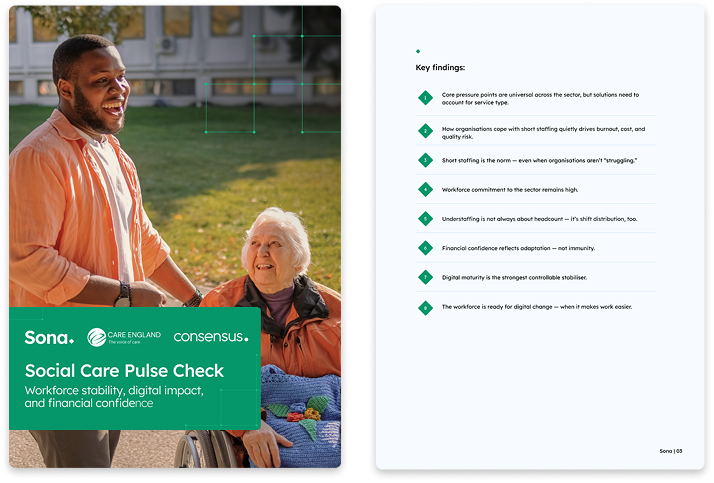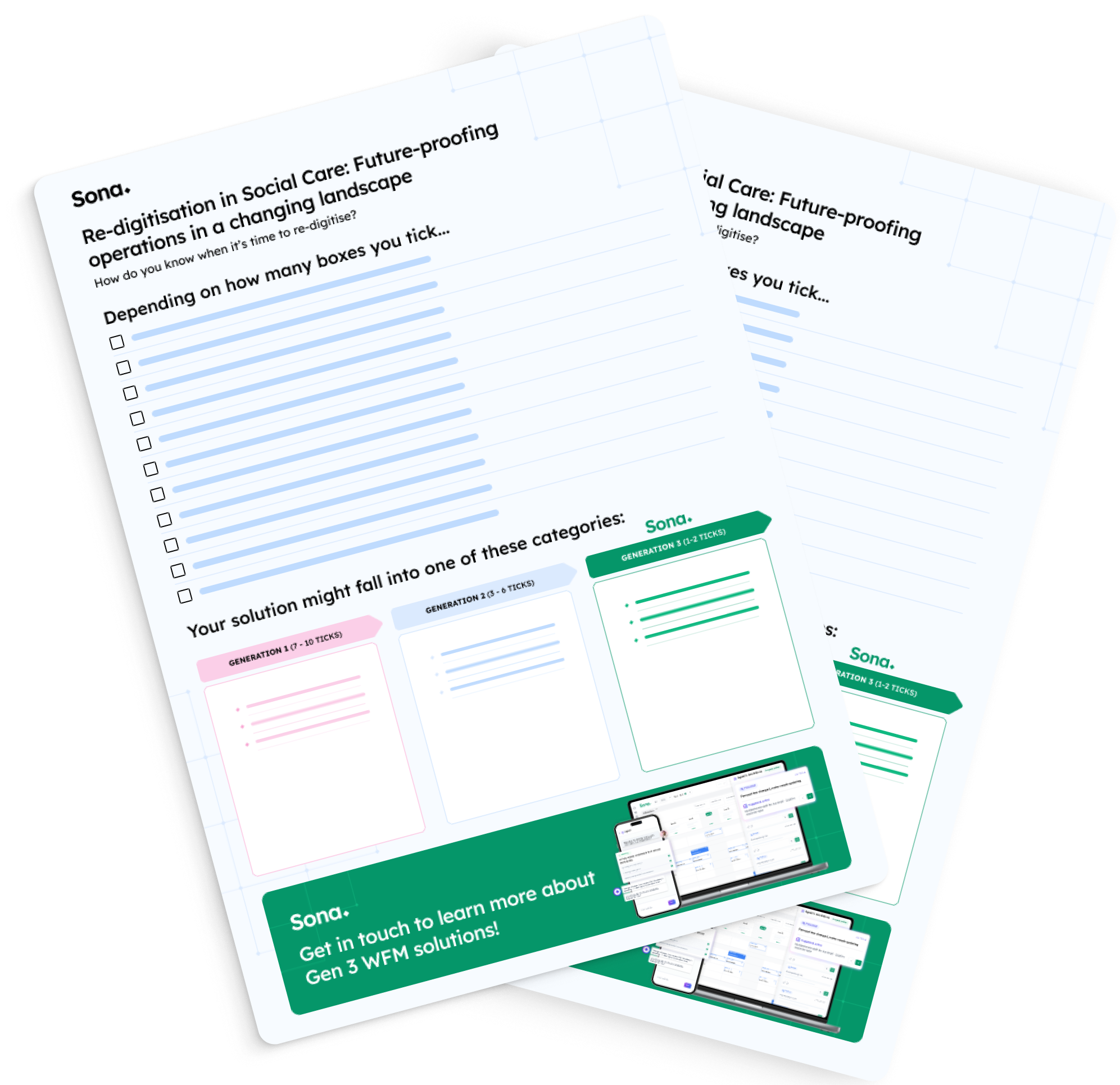Insight, Social Care, Scheduling
How much could missed shifts be costing your business?
What is 'under-contracting' (or under-contracted hours)?
3 minute read
A number of our customers (across industries) have challenges ensuring their contracted teams work the hours they’re committed to. It could be that variances in shift length mean that a staff member's weekly or monthly hours worked don't tally with their contracted weekly/monthly hours.
In large organisations this can add up to a significant difference in hours paid for compared to hours actually worked, with serious consequences for the bottom line.
A small variance in actual vs contracted hours can have a big financial impact
Let’s say our fictional care home operator has 1000 permanent shift-based care staff. For simplicity we have based the calculations on an average annual salary of £16,164 and an average of 31 hours a week.
If the proportion of actual hours worked to scheduled across all 1000 staff drops just 0.5% (from 100% to 99.5%), over a year this is equivalent to 930 unworked 8 hour shifts, or almost 1 missed shift per staff member.
The cumulative cost in contracted hours paid for but not worked is over £80,000, and that’s before factoring in paying overtime or agency staff costs to cover unfilled shifts. This is a big payroll challenge as variances in these unplanned costs are hard to predict accurately.
Why is rota adherence such a challenge for frontline organisations?
Many of the biggest and most obvious disruptors of our customers’ rotas (sickness/unplanned absence, COVID protocols) are unpredictable and happen with little notice. There are a number of reasons why this is more troublesome for frontline workforces than for desk-based companies.
- More roles require specialist training or qualifications, so they can’t just be covered by whoever is available
- The productivity lost from being understaffed can’t be caught up at another time - it’s gone forever
- Some industries (e.g. healthcare) have to demonstrate to regulators that their staffing levels meet a certain threshold at all times
A problem scheduling can’t solve alone
With so many moving parts, and with managers constantly preoccupied with finding shift cover, schedules that had been carefully crafted just one week earlier can quickly look different once they come into direct contact with reality.
Traditional workforce management / rostering / scheduling systems are great for creating and optimising rotas. But many haven’t built in the necessary flexibility to accommodate the practical challenges faced by scheduling managers on a daily basis.
Static schedules don’t give managers full visibility of who is available to cover or change shifts, or who has already agreed to do so.
Finally, most of these systems were built with a ‘top-down’ perspective and aren’t user-friendly, so they don’t empower frontline management and staff to take control of their schedules.
Pioneering a new approach to frontline workforce management
Because our technology focuses on the end user experience, we’re taking a completely different approach to managing frontline teams.. We’re building a truly modular system (with modular pricing), so that the technology we put in our customer’s hands fits their operating model and fixes the problems they need to solve.
Our answer is Sona's ‘Open Shifts’ module. Open Shifts is designed to fix 75% of the major problems created by the lack of effective rostering, but with lower cost and administrative requirements both centrally and at the location manager level.
How does Open Shifts work?
Think of Open Shifts as ‘rostering in reverse’. Our goal is to improve overall schedule and individual shift visibility at all levels of the organisation by enabling real time alerts and instant booking of additional shifts made available through Sona. We believe this is the key to reducing payroll overspend, whether that’s due to under-contracting, overspending on agencies, or the cost of excessive staff churn.
When a shift cannot be filled by an available team member, the shift is automatically pushed (via a mobile notification) to all currently employed team members first, whether they are full time, part time or relief teams - to reduce agency spend at the point of need.
Our customer success team will ensure the analytics we provide to you can show contracted staff are being utilised on a daily/weekly basis.
How are other companies benefitting from Open Shifts?
On average, we have seen agency spend reductions of up to 20%, often within months of customers going live. Other advantages of Open Shifts include:
- speed of implementation (we can get you live in as little as 3 days, versus long, expensive and over-functional rostering)
- regular performance updates thanks to our cloud-based infrastructure
- as team members become more used to controlling their work schedules through the app, Open Shifts learns about their preferences, and determines optimal notification strategies to give our customers the best possible chance of filling shifts from within the currently contracted workforce (even at very short notice)
How easy is it to get started?
All new customers are welcome to try Open Shifts as part of a no obligation free trial of Sona.
We are constantly building new functionality for some of the UK’s largest employers, so we can offer you access to new features/modules as and when you need them without the need for an upfront commitment.
Enjoyed this article? Let's stay in touch 👋
If you liked this article, why not subscribe to our newsletter to get the latest news and views delivered straight to your inbox?

